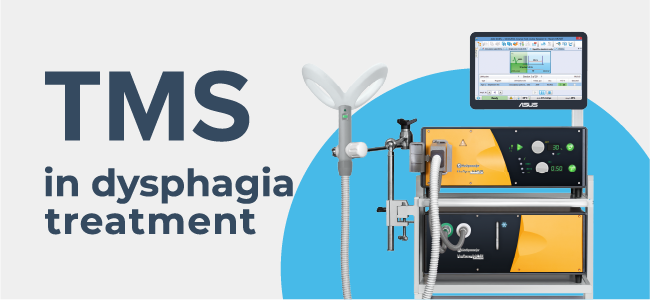The incidence of dysphagia after stroke accounts for 20 to 64%. It makes swallowing disorder one of the most common sequels of acute cerebrovascular accident. The use of transcranial magnetic stimulation (TMS) significantly improves swallowing function in stroke patients.
We want to share the findings of the recent study on the treatment of dysphagia after infratentorial stroke using TMS. It is notable that the researchers from China chose Neurosoft equipment for this study, including the Neuro-MS/D transcranial magnetic stimulator, double cone coil DCC-03-125-C, and the 32-channel EEG and long-term monitoring system Neuron-Spectrum-5.
In this randomized, single-blinded, controlled trial Chinese scientists investigated the effectiveness of 10-Hz cerebellar rTMS in poststroke dysphagia (PSD) patients with infratentorial stroke (IS). The study involved 42 patients. The results demonstrated a significant improvement in the patients who received bilateral cerebellar rTMS. Furthermore, it was shown that cerebellar stimulation contributes to increased excitability of the corticobulbar tract, which can also enhance swallowing function.
The study's conclusions indicate that bilateral 10 Hz cerebellar rTMS is a promising non-invasive method for treating dysphagia after infratentorial stroke. These findings could have significant implications for the development of new approaches in rehabilitating patients suffering from such a complication of acute cerebrovascular accidence.
We proud that Neurosoft equipment is being chosen for scientific research worldwide!
